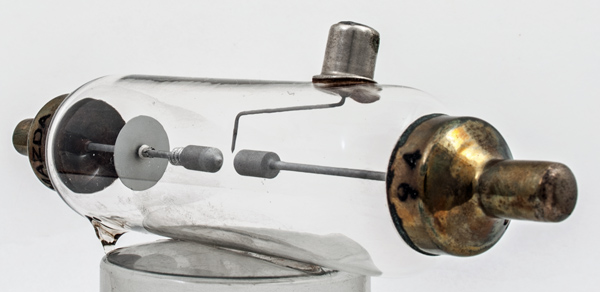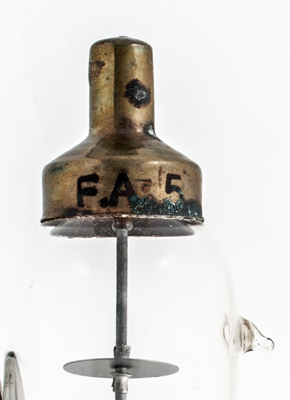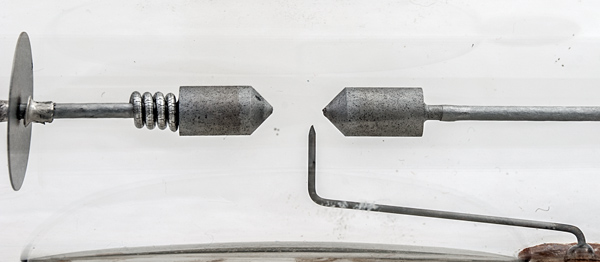
|
The Mazda FA5 or FA.5 dates to 1951 and was the first commercial light source that matched natural sun light.Its arc operates between solid tungsten electrodes in an atmosphere of pure xenon containing in a tubular hard glass envelope. It is designed to be operated continuously from the mains with an inductive ballast, or as a powerful electronic flash tube on a 2,000V supply.Under continuous operating conditions its spectral characteristics are those of a normal xenon arc, but under high-intensity flash conditions there is a slight shift towards the blue end of the spectrum, so that the colour approximates to that of North-sky daylight. Colour rendering is excellent. Full light output is reached almost immediately and dimming can be effected with negligible variation in the colour of the light.As a flash tube, the unusually small arc and high intensity makes it especially suitable for use with precision optical systems. Setting up and focussing can be facilitated by continuous operation of the tube. Its excellent performance in optical systems made this lamp the first light source that enabled retinal photographs to be taken inside the human eye, and it made a huge contribution to medical knowledge in this area.As a continuous burning lamp, its main advantage was its low cost and simplicity compared with quartz high pressure xenon lamps. A standard hand-held Tesla coil was used to ignite the arc which ran in series with five 400W mercury ballasts. In continuous burning it had to be run vertically with the electrode having the heat shield disc above.As a flash tube the energy maximum is 150 Joules per flash. The trigger voltage is around 12 kV. If operated continuously the rating is 230 Watts - 13.5 Volts across the arc at a current of 18.5 Amps.
The disc on the left is a heat shield for when the tube is mounted vertically.
The Type designation.
The main electrodes and trigger wire. There is some pitting on the electrodes from use.The wide glass tube envelope is 32 mm in diameter and, including the base caps, is 150 mm tall.References: Internet - lamptech.co.uk. Type FA5 was first introduced in 1951. See also 1951 adverts. |
Updated December24, 2019.
|
|